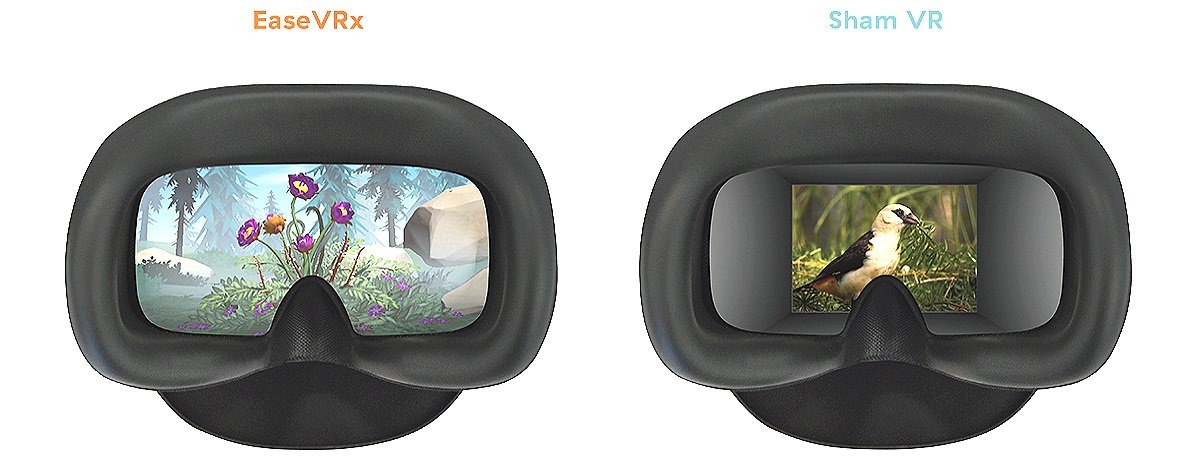Virtual Reality Shows Long Term Benefits for Chronic Low Back Pain
/By Pat Anson, PNN Editor
Critics of virtual reality therapy often say it’s a poor treatment for chronic pain because it only distracts patients from their pain and that the effects are temporary, at best.
But new research suggests that the benefits of virtual reality (VR) can last six months after treatment has stopped – at least for patients with chronic low back pain.
The study, published in the Journal of Medical Internet Research, followed 188 people with chronic low back pain who had an average pain intensity score of 5 on a zero to 10 point scale.
Half the participants were given an EaseVRx headset to watch 3-D programs daily for 8 weeks, immersing themselves in a “virtual” environment where they can swim with dolphins, play games or enjoy beautiful scenery. The goal is help patients learn how to manage pain through cognitive behavioral therapy.
The other patients also used the EaseVRx headset, but only watched routine nature scenes as a placebo or sham VR treatment.
JOURNAL OF MEDICAL INTERNET RESEARCH
Patients were followed for six months after treatment was stopped. Participants in both groups reported improvement in their pain and other symptoms six months after treatment, but the improvements were more significant in those who received VR therapy. Pain intensity was 31% lower for patients in the VR group, compared to 16% in the sham group. Physical function, mood, sleep and pain-related interference in activity were also better in those who received VR therapy. No adverse side effects were reported in either group.
“We have been pleasantly pleased and surprised that patients are maintaining clinically meaningful changes in pain intensity and interference 6 months after returning the device. It appears people are actually acquiring skills in a relatively short period that they continue to retain/apply months after treatment,” said Josh Sackman, co-founder and president of AppliedVR, which makes the EaseVRx headset.
AppliedVR is planning more research to see how patients respond long-term to VR treatment. A brain imaging study is being conducted to measure brain activity before, during and after treatment. Patients are also being recruited for a large clinical trial to see how VR therapy impacts pharmacy and medical claims.
“In order to drive real acceptance, we are committed to extensive research to address any skepticism people may have,” Sackman told PNN.
The EaseVRx headset was given a Breakthrough Device Designation by the FDA in 2020 for fibromyalgia and low back pain. Last year the agency authorized the marketing of the headset for chronic low back pain in adults, the first medical device of its kind to receive that designation.
EaseVRx headsets are currently being used for pain management in over 200 hospitals and healthcare systems. A full commercial launch for home-based use is not expected until next year.




